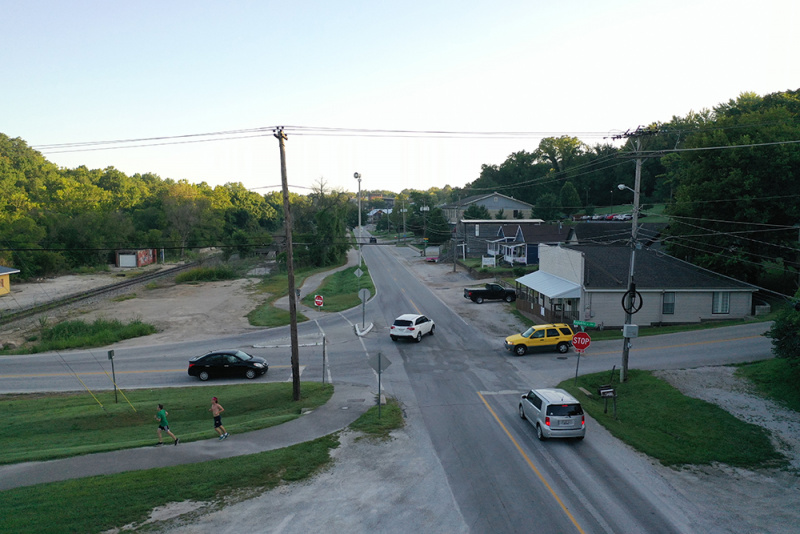With development back in the forefront in Galloway Village, many have wondered about the history of the area. When was Galloway founded? What contributed to the “village feel”? Did we just recently come into existence when the apartments were built? We have the answers to all these questions and more in this brief summary of Galloway Village—then and now.
Galloway Village was once a small village six miles southeast of Springfield located along the White River Trail Road. Later this road would become US Hwy 65 and today is known as Lone Pine Road.

The village is named for Maj. Charles Galloway, a well-known veteran who fought in several historical wars. Prior to the Civil War, Maj. Galloway purchased land that he planned to farm. He later used the Homestead Act of 1862 to purchase more land, making him a large landowner. Today part of his land lies along Republic Road and includes Rivermont Cemetery. However, Maj. Galloway was not one of the first to settle in our village community.
In the early 1840s, Jacob Painter moved to the area that includes the Sequiota Park today. Painter is listed on several neighbor abstracts as owning more than 160 acres in our stream valley. The original deed of the cave and the surrounding land read:
Section 9, Township 28, Range 21, Contents: 160 acres; Rate per acre: 1 Dollar, 25 cents. Purchase money: 200.00 dollars, 00 cents. Name of purchaser: Jacob Painter.
Sequiota Park would change hands several times over the years. The state of Missouri would eventually purchase the property in 1920 for the second fish hatchery in the state. In 1959, the state would donate the property to the City of Springfield and in the 1980s the city placed Sequiota Park on its list of historic land sites.
By the 1880s, the area had become a thriving mining village that included a community of workers to mine the new lime plant/kiln along with quarry workers comprised of railroad employees. New businesses were built to accommodate the growth. A village post office was established in 1883 and operated until 1943. Along with the railroad came the highway interchange of US 60/65 that went straight through Galloway. In the 1940s, U.S. 65 (Lone Pine) became lined with gas stations, cafes and taverns, general stores and grocery stores. By the 1950s, the businesses began to fade away as the new U.S. Highway 65 was built, bypassing Galloway. Springfield citizens voted to annex Galloway into Springfield in 1969.

The village slowed down and was quiet for a while until the 1980s when a new kind of business traffic began to spring up, replacing the old gas stations and cafes with craft and antique shops. Galloway became a shopping village.
Today, our village community is a mixture of the old and new. You can still see original Ozark stone masonry structures and a couple of the old general stores still exist. To many, the village of Galloway is just a small spot in the southeast corner of Springfield. To the neighborhood, it’s much more than property with dollar signs on it. It is home to many families who have lived in our neighborhood for generations, some going back to the early 1900s.
Galloway Village is more than just history. We recognize the importance of our past and heritage. Galloway is an area that should be appreciated for its past as well as its future and should be respected for its distinctive character. As the November ballot grows closer, when all Springfield citizens will have the opportunity to weigh in on the fate of sunsets at Sequiota Park, we hope that voters will choose to embrace Galloway Village for its uniqueness, instead of a rezoning that will forever dominate the landscape of Sequiota Park.


